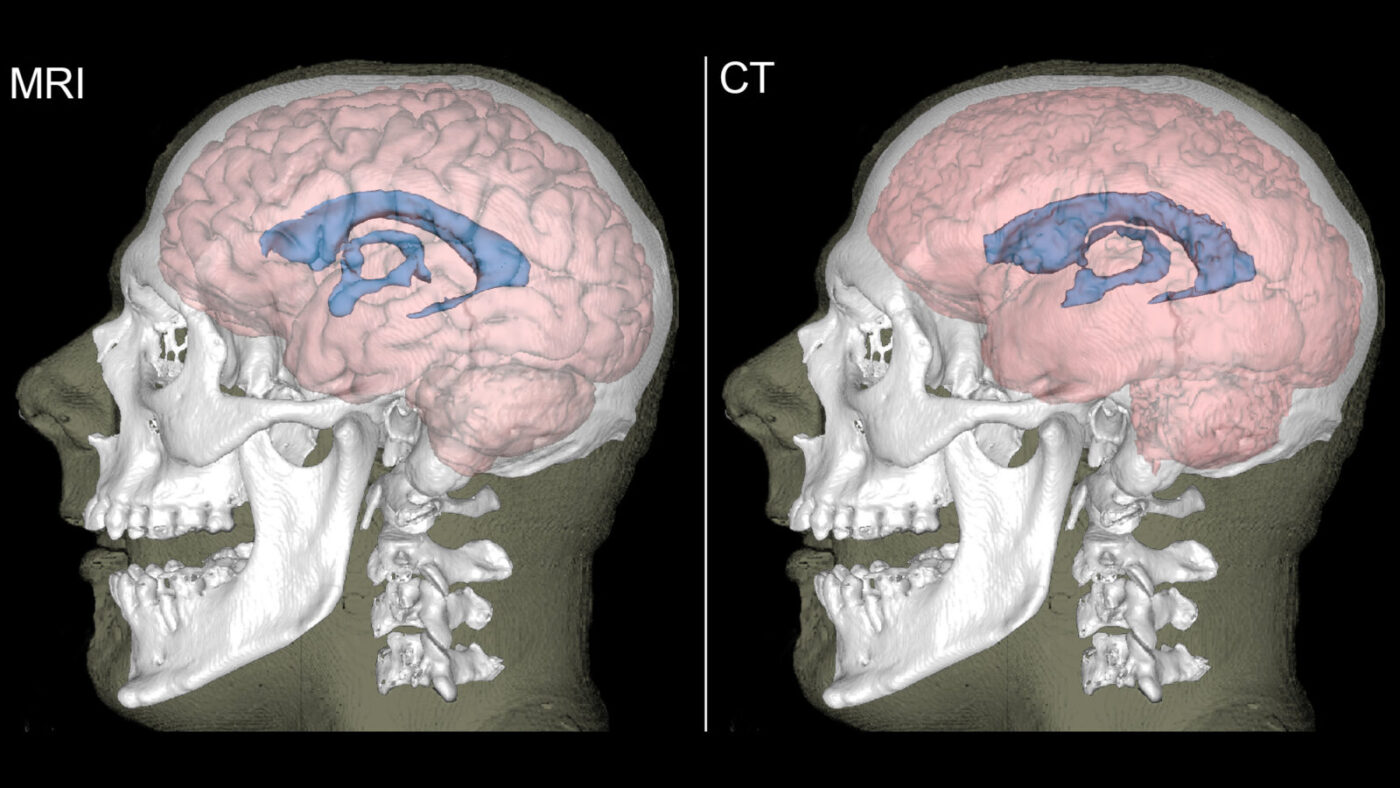Research Areas

Quantifying brain age
In recent years, the concept of biological age has gained popularity as a metric for assessing the rate of aging of an individual or organism that may be different from their chronological age. In the field of neuroscience, the difference between an individual’s chronological age and their biological brain age, often notated as an individual’s age gap, has been used as a marker of neurological injury and degenerative disease. Biological brain age is most commonly estimated using classical statistical and modern machine learning techniques. We use both existing and novel approaches to determine an individual’s biological brain age from their brain MRIs. Notably, larger age gaps may indicate atypical aging and thus have clinical applications in assessing a person’s risk of neurodegenerative diseases, such as Alzheimer’s Disease, or their cognitive recovery following traumatic brain injury. Additional applications may exist in projecting future cognitive deficits as a result of advanced brain aging.
Links to publications:

Demyelination in health and disease
Myelin sheaths are fatty axonal coatings that are essential to the health and function of the brain. Cortical demyelination is a pathological outcome of traumatic brain injury (TBI). The ratio R of T1– to T2-weighted magnetic resonance image intensities serves as a measure of relative myelin content in the cortex. We compute R in persons with mild TBI (mTBI) one week and six months after injury, and in healthy controls for comparison. In doing so, we are able to map intracortical myelin and its change over time after mTBI. We explore how patterns of demyelination after mTBI, as captured by R, differ from those in typical aging, as a proxy for central nervous system dysfunction. By better understanding demyelination after mTBI, we move the field closer to developing remyelination therapies and related clinical interventions.
Links to publications:
Mild traumatic brain injury results in significant and lasting cortical demyelination

Functional neuroanatomy of brain injury
Studying the functional neuroanatomy of mild traumatic brain injury (mTBI) is essential for understanding neurological and cognitive outcomes post-injury. The brain undergoes significant changes in functional connectivity (FC), quantified using functional magnetic resonance imaging (fMRI), after mTBI. Patterns of FC alterations underlie both persistent neural and cognitive sequela of mTBI, which change at different rates depending on a persons age and sex. Our efforts focus on post-traumatic FC changes at acute and chronic stages of a person’s injury. We map sex- and age-dependent FC changes across cortical resting-state networks (RSN) for ~6 months post-injury in a cohort of mTBI patients. Our findings reveal that male sex and older age at injury are risk factors for significant FC alterations whose patterns underlie post-traumatic cognitive deficits.
Links to publications:
Functional connectome dynamics after mild traumatic brain injury according to age and sex

Atypical aging in non-industrial populations
Accelerated brain loss and atrophy can indicate dementia risk. The decrease in brain volume of the indigenous forager-horticulturist Tsimane tribe of lowland Bolivia is 70% slower than in Western populations. We generate automatic segmentations of computed tomography (CT) brain scans acquired by the Tsimane Health and Life History Project. Volumetric analysis of sub/cortical brain regions allows us to compare the brain development and atrophy of the Tsimane people against populations in developed countries. Because of their non-sedentary lifestyle and high-fiber diet of vegetables and lean meats, the Tsimane are a unique population in which to study the detrimental effects of modern lifestyles on our health and ageing.
Links to publications:

Structural connectomics in health and disease
Mild traumatic brain injury (mTBI) has a plethora of cognitive and neurological consequences, which for many people persist far longer than suggested by their lack of abnormal findings on magnetic resonance imaging (MRI). Instead, shearing from diffuse axonal injury or secondary chemical cascades causing excitotoxicity can cause damage to the white matter that is invisible on such scans. Our team is leveraging diffusion MRI (dMRI) and network theory to characterize the brain network for the clinical care of persons with mTBI. We explore the utility of structural connectomics as an additional indicator of cognitive outcome, by extracting neuroquantitative metrics summarizing communicability across the brain. Our goal is to characterize network distances and cognitive improvements between persons with mTBI and cognitively normal cohorts longitudinally, using machine learning and statistical techniques to validate the predictive capacity of structural network metrics. Prognosing trajectories of neural and cognitive recovery or decline is essential, both for patients to understand their injury, and for clinicians to plan neurorehabilitation.
Links to publications:

